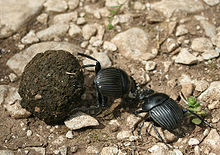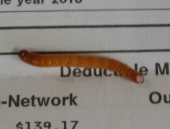
 2
2








You can see with only one eye open, but you'll probably run into things and stub your toe. The big picture matters.




“All good things are wild, and free.” Henry David Thoreau




Dung beetles play a role in agriculture and tropical forests. By burying and consuming dung, they improve nutrient recycling and soil structure.[28][29] Dung beetles have been further shown to improve soil conditions and plant growth on rehabilitated coal mines in South Africa



Invasive plants are Earth's way of insisting we notice her medicines. Stephen Herrod Buhner
Everyone learns what works by learning what doesn't work. Stephen Herrod Buhner










 2
2





Be joyful, though you have considered all the facts. ~Wendell Berry




Kim Goodwin wrote:That looks like a blister beetle to me. I tried to search for European blister beetles, and this type looks similar to your picture. There are many types of blister beetles, and they eat all sorts of things. But the ones that looked most like your picture above -to me - are the Meloe genus. It's a total guess, but there is a similarity. It's hard not being able to see the abdomen in your picture. But you know what it looked like, so check this out:
Meloe genus blister beetles on Wiki
One type of blister beetle:




You can see with only one eye open, but you'll probably run into things and stub your toe. The big picture matters.




 2
2




You can see with only one eye open, but you'll probably run into things and stub your toe. The big picture matters.
 2
2




“Action on behalf of life transforms. Because the relationship between self and the world is reciprocal, it is not a question of first getting enlightened or saved and then acting. As we work to heal the earth, the earth heals us.” ~ Robin Wall Kimmerer




Heather Olivia wrote:From my understanding, the larva of the oil beetle hang out on flowers and send out pheromones to attract a male bee, who they then hitch a ride on back to the nest. There, they feed on the bee larvae and pollen. Once they pupate, they emerge from the hive as adults. So alas, there'd be no excluding them with mesh. There's more detailed info about their life cycle here
From the article, it sounds as if they parasitize ground dwelling solitary bees. So maybe they don't bother honey bees?
You can see with only one eye open, but you'll probably run into things and stub your toe. The big picture matters.
 3
3




"Disturbance is critical" Joel Salatin




 1
1




"Disturbance is critical" Joel Salatin

|
I can't beleive you just said that. Now I need to calm down with this tiny ad:
The new kickstarter is now live!
https://www.kickstarter.com/projects/paulwheaton/garden-cards
|





